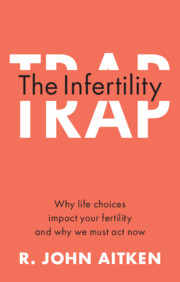Chapter 9
Published online by Cambridge University Press: 05 May 2022
Summary
How do we escape the trap?Many of the social, biological and environmental mechanisms that are driving down human fertility, are self-reinforcing. They operate to accelerate the rate of fertility loss, not stabilize it. Escape from this downward spiral will involve several initiatives that, working together, may provide a measure of control over the rate and depth of fertility decline. For example, we need a complete overhaul of sex education that recognizes the fragility of human fertility and is not so focused on the prevention of teenage pregnancies. We also need to raise the profile of reproductive toxicology so that we can secure better control over the release of potentially harmful compounds into the biosphere. There is a particular need to control male exposures to oestrogens and to counteract those elements of lifestyle, metabolism and the environment, responsible for creating oxidative stress in both the male and female reproductive tract. Accommodating the ART industry would be easier if we secured a deeper understanding of the causes of human infertility so that ART does not become the default therapy for every couple and, when it is used, that IVF is preferred over ICSI. Finally, we need to engineer new social structures wherein fertility is facilitated and encouraged.
Keywords
- Type
- Chapter
- Information
- The Infertility TrapWhy life choices impact your fertility and why we must act now, pp. 305 - 329Publisher: Cambridge University PressPrint publication year: 2022

